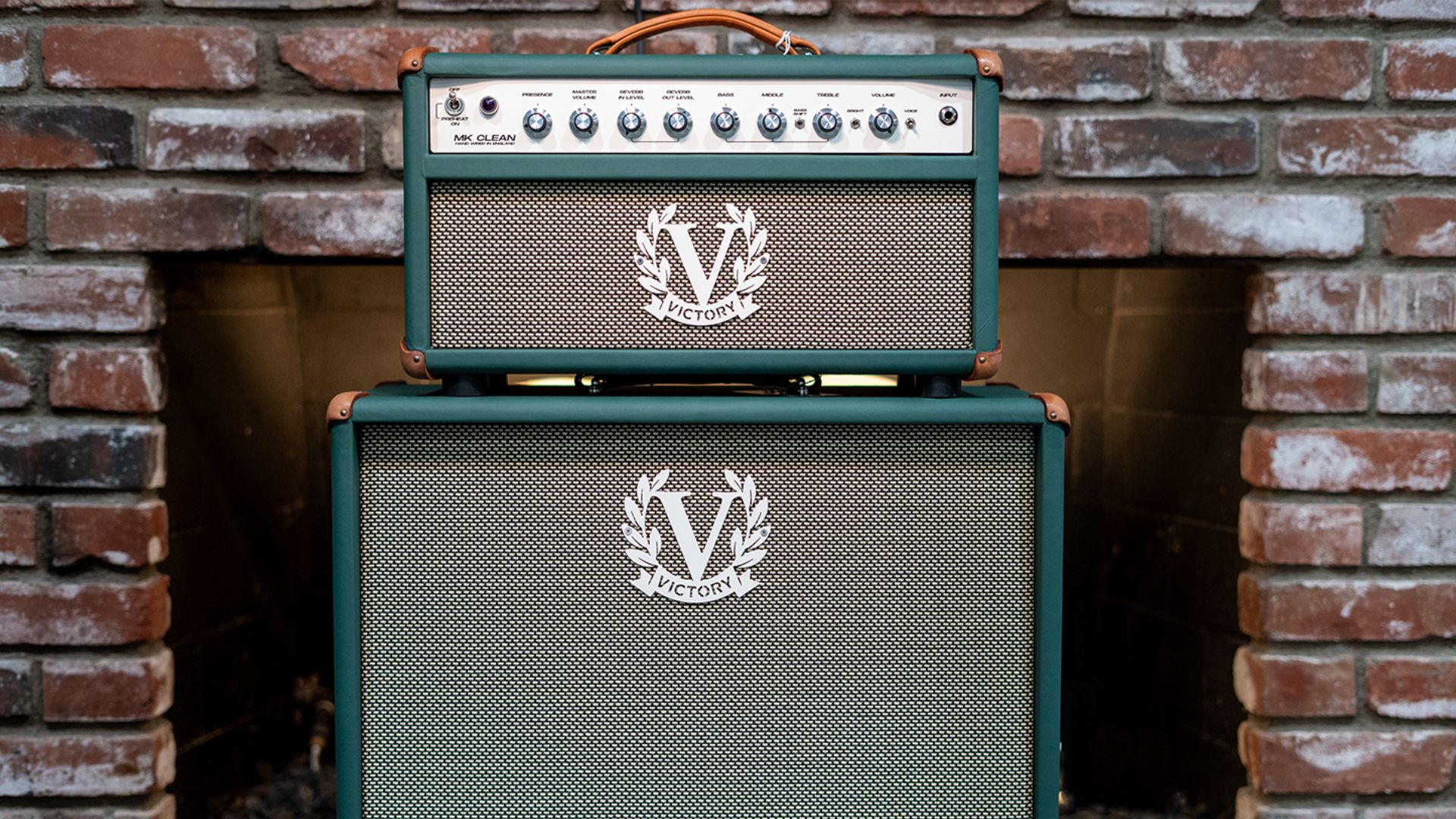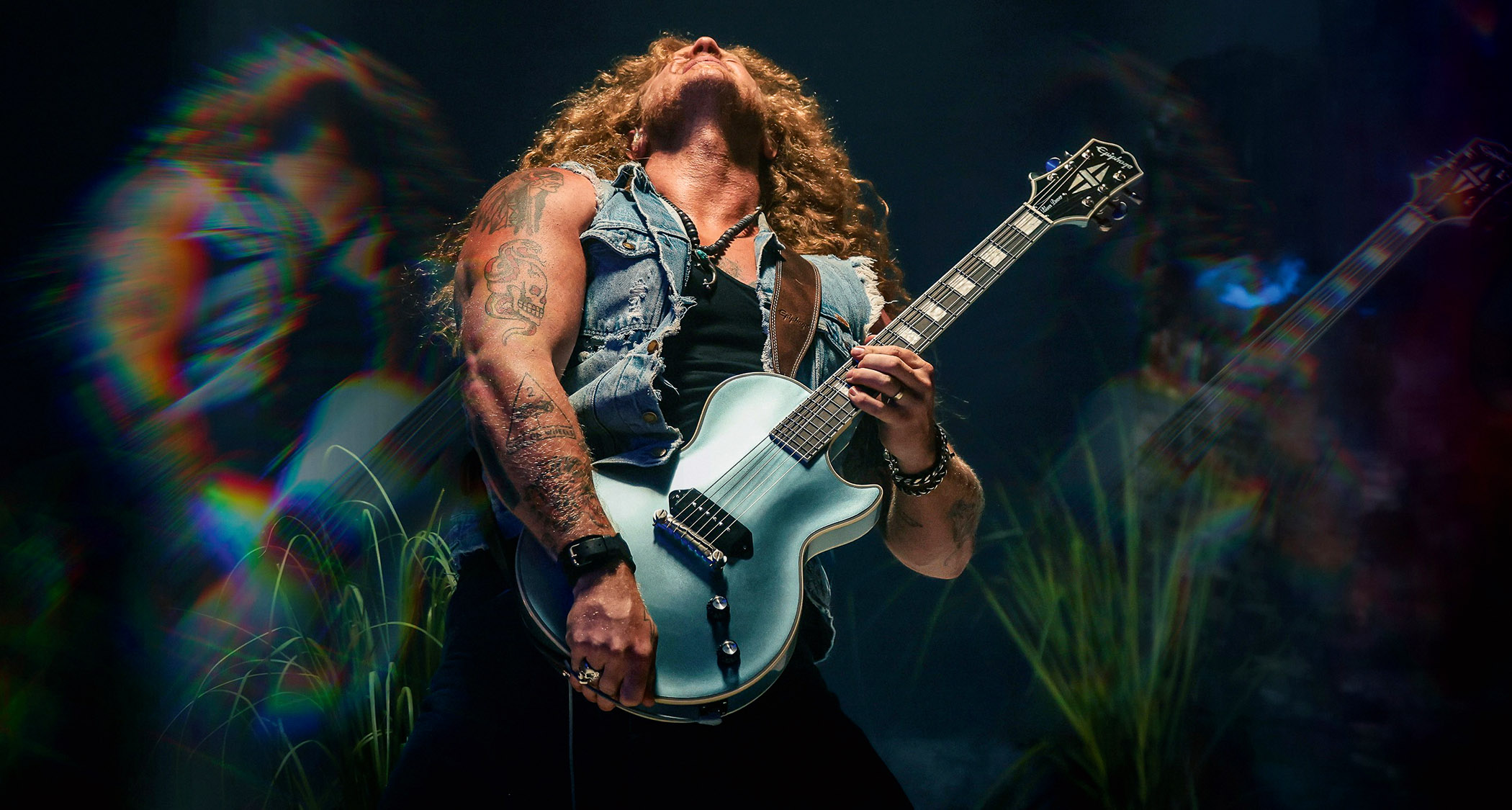“It was suggested we try making a Dumble-style clean. They’re so mystical – I’d never played one. You can look at the circuit and still be none the wiser”: The unstoppable rise of Victory Amps – and what comes next
Chief designer Martin Kidd tells how the UK amp firm went from boutique amp beginnings to an expanding portfolio of high-end amps for your backline and pedalboard, championed by the likes of Guthrie Govan, Mastodon, Ritchie Kotzen and Graham Coxon

Whether you prefer the sound of vintage blues, indie crunch, harder rock or progressive metal, you’ll probably have seen a Victory amp on stage at one point or another.
Given the bar of quality that stretches across their range of products – from stacks and combos to pedal amps and solid-state stompboxes – it’s no surprise their designs have been popular with all kinds of players, as demonstrated by their growing list of high-profile endorsees.
For Chief Designer Martin Kidd, who had already built a solid reputation as one of the finest amp builders in England through his work at Cornford, it’s been a case of listening to what artists want and ensuring that their needs are met at every stage.
By his own admission, the brand’s inaugural releases – hand-wired V100, V50 and V10 heads – didn’t make a big splash on the market, but by the time they started working with Guthrie Govan on designing the V30, interest began to soar.
Below, he explains how the company went from relative newcomers to one of today’s most popular guitar amp brands, producing equipment to suit music of just about every kind.
When did you get serious about amp building?
“I mainly taught myself. There was a local repairman who talked to me [as though] I could understand when I really didn’t, but the few things I did understand from school physics inspired me greatly.
All the latest guitar news, interviews, lessons, reviews, deals and more, direct to your inbox!
“Another friend experimented with the post-phase splitter master volume mod from The Tube Amp Book [by Aspen Pittman]. I decided to try that on my 1969 Marshall. They weren’t worth a lot of money in those days. It worked; I didn’t burn anything down… I’m still here.”

How did Victory start to take off?
“The initial launch was toward the end of 2012, though we chose not to come in making lots of noise. We started off with boutique stuff, and no-one took much notice until we spoke to Guthrie about working together. The first part of the brief was the size; it had to fit into an overhead compartment on a budget airline. Then we started talking about the tones.
“After the V30 launch, Victory started to get taken seriously. Lunchbox heads weren’t entirely new; there was the Linear Conchord back in the ’60s and more recent stuff like the Orange Tiny Terror. But ours was more full-on, with around 40 watts to cover most gigs while being easy to cart around.”

You’d worked with Guthrie and Richie Kotzen during your time at Cornford. What do players like that look for?
“Guthrie just wants a good clean and overdrive sound. He can do an enormous amount from the guitar’s volume. I went to see him play using an early V30 prototype. He ended up doing everything from the guitar using just the overdrive channel, which impressed me. He wants a peculiar balance of headroom, compression, clarity and sustain.
“Basically, he wants to have his cake and eat it! He doesn’t necessarily need an extra pedal to get his lead tone, even if he chooses to use one. Whether it’s fast legato stuff or heavy palm mutes, the amp shouldn’t be fighting what you’re trying to do.
“Its job is to make you sound as good as possible. Richie didn’t want a clean channel; he prefers doing everything from his guitar, so he sets his single-channel amp to crunch and uses the boost for extra power.”
While their signature amps are more British-voiced, you also have American cleans and American high gain covered via the Duchess and Kraken, respectively.
“After the V30, it was suggested we try making a Dumble-style clean. They’re so mystical – I’d never played one. You can look at the circuit and still be none the wiser, so I decided to make a clean amp that wasn’t sterile. When people want a good clean, they don’t want something that sounds like you’ve plugged into a hi-fi. They still want harmonic content and compression.
What today’s players like isn’t that different to the gear from the ’60s and ’70s. Obviously metal amps didn’t exist back then, so I took the overdrive and refined it with all the nasty bits taken out
“I probably focus more on overdrive, but if you have a nice drive, you get a nice clean by turning down. All the chime and harmonics stay. When Chris Buck started playing bigger venues, he wanted higher-powered amps to hear himself and fill the venue. Clean headroom became an important consideration with the V40 Duchess.
“Then we did the opposite with our metal amp, the Kraken. What today’s players like isn’t that different to the gear from the ’60s and ’70s. Obviously metal amps didn’t exist back then, so I took the overdrive and refined it with all the nasty bits taken out. But the core of those sounds were gotten right the first time, much like the Telecaster, Les Paul or Strat.”

Your latest designs are the MK Clean and MK Overdrive. Where do these fit into the roster?
“The main difference is they are hand-wired. The MK Clean is a high-headroom amp that’s loud but won’t fight you. You can play softly and still be heard. It has all the ingredients you want but don’t always get. These amps are a nod back to what I made at Cornford and early on with Victory.
You develop products by listening to what people have to say
“Some people prefer this kind of gear, but I don’t have a problem with printed circuit designs. Even with the latest new circuits, some elements are PCB-mounted, like switching relays or mute circuits, because relays can cause pops and bangs. Everything else in terms of the signal path is gold turrets and hand-wired.
“It’s a hybrid construction method that’s more mechanically stable. It’s the same with the MK Overdrive, which was born of all the requests for a reissue of the Cornford MK50 mk2. We refined it with more scope for sounds and gain levels. I tried to remember the quirks of the original and produce something a little more intuitive.”
What’s next for Victory? We imagine a Chris Buck signature model would sell rather well…
“All I can say is, watch this space! I don’t know if anything’s been finalized. Chris just launched his first pedal through Thorpy Effects – which is the same company we collaborated with for our solid-state pedals.”
Bill Kelliher and Brent Hinds from Mastodon have been using Victory lately, which is interesting given they’ve had Friedman and Orange signature amps in the past.
“Brent has been using the 100-watt Sheriff, and we’ve been chatting to Bill about tweaking the VX100 he currently has. You develop products by listening to what people have to say. I think he would like the clean channel of a V140 with the same gain options. It’s something I’m considering for a mk2 version!”
Have there been any other welcome surprises in terms of artists using your gear?
“Lots! I have to say Graham Coxon from Blur was a nice surprise. I thought somebody like him would have had a traditional kind of deal with Fender or Marshall. He was such a humble and unassuming bloke. We met at the 2020 NAMM Show when he came over and introduced himself.
“My original heroes and tonal references are people like Gary Moore, Eddie Van Halen and Michael Schenker, so to have someone like Graham become interested in my designs made me happy.”
Amit has been writing for titles like Total Guitar, MusicRadar and Guitar World for over a decade and counts Richie Kotzen, Guthrie Govan and Jeff Beck among his primary influences as a guitar player. He's worked for magazines like Kerrang!, Metal Hammer, Classic Rock, Prog, Record Collector, Planet Rock, Rhythm and Bass Player, as well as newspapers like Metro and The Independent, interviewing everyone from Ozzy Osbourne and Lemmy to Slash and Jimmy Page, and once even traded solos with a member of Slayer on a track released internationally. As a session guitarist, he's played alongside members of Judas Priest and Uriah Heep in London ensemble Metalworks, as well as handled lead guitars for legends like Glen Matlock (Sex Pistols, The Faces) and Stu Hamm (Steve Vai, Joe Satriani, G3).




